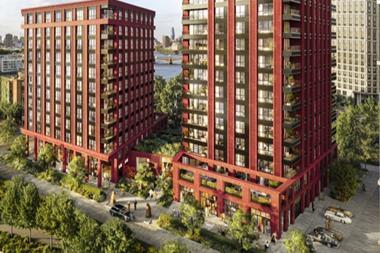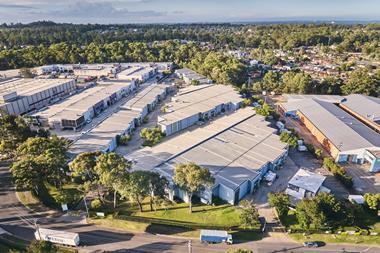There is currently about 20m sqft of empty space in London’s office buildings which could be used to create 28,000 homes in the UK capital, CBRE has estimated.
London’s new homes pipeline could be exhausted in as little as six years, supporting the case for office-to-residential conversions, according to research from the global real estate adviser.
The report – Office to Residential Conversion in London: The Opportunity & Challenge – analysed historic residential sales rates and found that the current stock of unsold homes in London could be absorbed in just two years. CBRE said that, when applied to the total pipeline of homes, it indicates an approximate lifespan of just six years’ worth of supply across the city.
Converting existing office stock could provide provide much-needed housing and partly soften this shortfall, CBRE said.
Central London has an office vacancy rate of around 8.5%, representing around 20m sqft of empty space, and of this approximately 16m sqft is considered secondhand stock. This availability of second-hand stock, if converted, could equate to an estimated 28,000 homes delivered to the market, CBRE’s report found.
Scott Cabot, head of residential research at CBRE, said current market conditions were making conversion an even greater consideration for office owners.
“The risk of stranded offices that no longer meet occupier needs or proposed regulatory requirements is pushing the repurposing of these assets to the forefront of investors’ minds, and we are already seeing some evidence of this.
“Our data shows that between the start of 2022 and the end of May 2023 around £1.3bn worth of Central London office stock had been purchased with the intention of converting it to another use, and there’s more under offer.
“While only a small percentage of this stock has been allocated to residential use, it does highlight that investors are increasingly pursuing the opportunity to convert obsolete offices.”
According to CBRE, smaller office buildings, which are typically more conducive to conversion, make up a substantial proportion of office stock, with 8.2m sqft, or 40%, of Central London offices built since 1984 being smaller than 1,500 sqm – adhering to current permitted development rights (PDR) legislation.
Since 2015-16, a total of 21,000 homes have been delivered through PDR and the conversion of smaller offices to residential use, with a further 9,000 homes in the current PDR pipeline. Many of these homes have been delivered in outer London boroughs, including Croydon, Hounslow, and Brent, CBRE said.
Its report also found that the introduction of proposed minimum energy-efficiency standard (MEES) legislation was likely to be ”another catalyst for the repurposing of office stock”. Under the proposed regulation, commercial real estate buildings must have an energy performance certificate (EPC) rating of at least B by 2030 to be leased. The expense of upgrading many secondary and tertiary offices could be prohibitively high, making conversion more attractive to investors, the real estate adviser found.
However, a series of planning, structural and viability challenges in converting office buildings exist, CBRE said, including residential space standards, which not all office floors are able to accommodate.
CBRE added that in London most empty office space forms part of multi-tenanted buildings, and building need to be predominantly vacant before converting becomes viable. Office stock within the Central Activities Zone in London is also highly protected from conversion. In addition, landlords must market the vacant space for at least 12 months before repurposing will be considered, CBRE said.
Luke Mills, CBRE’s residential managing director, said government intervention will be required to facilitate these conversions from a planning perspective.
“London needs more homes and there is undoubtedly a growing amount of office stock that will need to be repurposed – so the opportunity to convert these offices to residential use is there,” he said.
“The proposal to increase the size limit of PDR conversions is positive, but there are numerous challenges that mean larger conversion opportunities will struggle to move forward in the current environment. A review of London’s long-standing land-use policy principals would be beneficial, and the planning system needs to further prioritise these conversions to unlock more opportunities.”
To read the latest edition of the latest IPE Real Assets magazine click here.


















